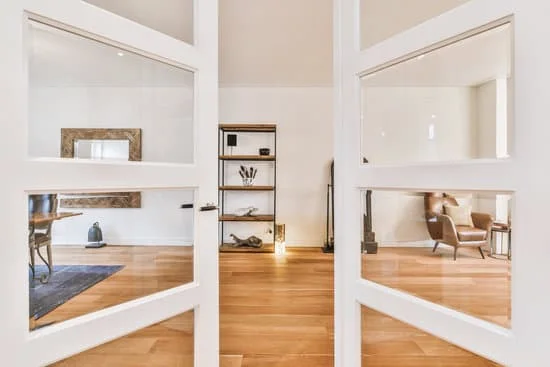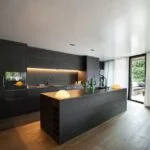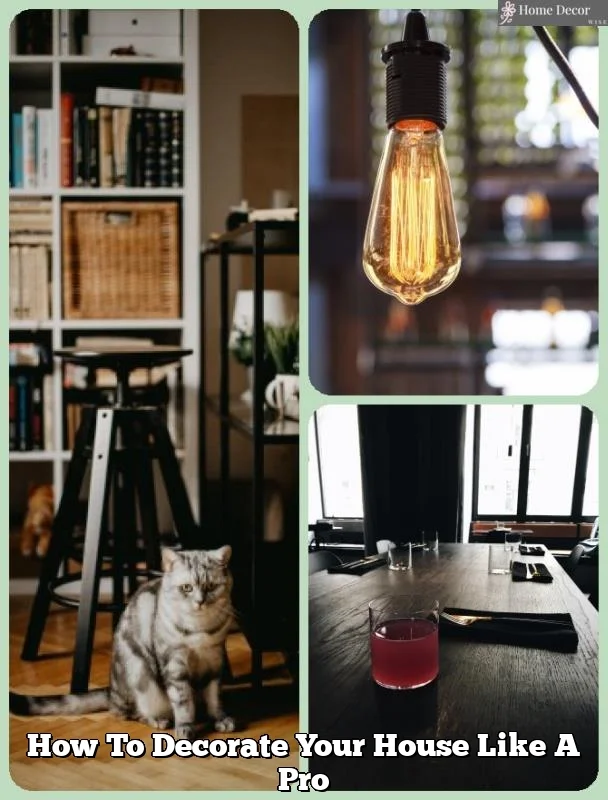Why decorate a home in disrepair? The idea of beautifying a space that is in need of repair may seem counterintuitive to some, but there are valid reasons for doing so. In this article, we will delve into the concept of decorating a home in disrepair and explore the psychological impact of creating a well-decorated space on mental health.
We will also discuss the Japanese concept of wabi-sabi as it pertains to home decor and provide practical tips for prioritizing decorating projects and working around structural and cosmetic issues. Additionally, we will examine the importance of creating a comfortable and functional space, regardless of the existing disrepair.
Many individuals may wonder why someone would bother to decorate a home that clearly needs repair. However, studies have shown that a well-decorated space can have a positive impact on mental health. By embracing this concept, homeowners can find beauty in imperfection and create an environment that promotes overall well-being. Furthermore, by prioritizing decorating projects and making strategic choices, it is possible to transform a home into a welcoming and aesthetically pleasing space despite its flaws.
In addition to discussing the psychological aspects of decorating a home in disrepair, we will provide practical tips for tackling such projects. From finding beauty in imperfection to addressing both structural and cosmetic issues, our aim is to guide readers through the process of transforming their homes. Through case studies of successful home decorating projects in homes in disrepair, we hope to inspire our readers to embrace the journey of creating a beautiful living space, regardless of any existing flaws.
The Psychological Impact of a Well-Decorated Space on Mental Health
Decorating a home in disrepair may seem like an unnecessary task, but the psychological impact of a well-decorated space on mental health cannot be understated. Living in a space that is visually appealing and inviting can have a significant positive effect on one’s mood and overall well-being. A well-decorated home can provide a sense of comfort, security, and pride, which are essential factors for good mental health.
Creating a Sense of Calm
A well-decorated space can create a sense of calm and tranquility, especially in a home that is in need of repair. By carefully choosing colors, textures, and furnishings, individuals can transform their living environment into a sanctuary that promotes relaxation and peace of mind.
Boosting Self-Esteem
Living in a beautifully decorated space can also have a positive impact on self-esteem. Surrounding oneself with aesthetically pleasing elements can foster feelings of pride and accomplishment, regardless of the condition of the home. This boost in self-esteem can contribute to an improved outlook on life and increased confidence.
Promoting Positive Social Interactions
Furthermore, a well-decorated home can encourage social interactions and gatherings. Individuals may feel more inclined to invite friends and family over when they feel proud of their living space. This social interaction is beneficial for mental health as it fosters connections and provides opportunities for support and companionship.
Finding Beauty in Imperfection
The concept of wabi-sabi is an ancient Japanese philosophy that emphasizes finding beauty in imperfection and impermanence. When applied to home decor, wabi-sabi encourages individuals to appreciate the authenticity of their living space, even if it is in a state of disrepair. This approach can be particularly beneficial for those living in homes with structural or cosmetic issues, as it shifts the focus from achieving perfection to embracing the unique character and history of the space.
In wabi-sabi-inspired home decor, there is an emphasis on natural materials, simplicity, and the passage of time. Textures such as worn wood, aged metal, and patinaed surfaces are celebrated for their ability to tell a story and evoke a sense of warmth and comfort. Additionally, imperfections such as visible cracks or irregularities are not seen as flaws but rather as integral elements that add depth and visual interest to the space.
Embracing the concept of wabi-sabi can also lead to more sustainable decorating practices. By cherishing what already exists within a home and incorporating salvaged or second-hand items into the decor, individuals can reduce waste and minimize their environmental impact. In this way, wabi-sabi encourages a mindful approach to decorating that is centered around gratitude and respect for the resources that have gone into creating a living environment.
| Wabi-Sabi Principles | Explanation |
|---|---|
| Natural Materials | Emphasizes the use of materials like wood, stone, and clay |
| Imperfections | Celebrates irregularities and visible signs of wear in decor |
| Sustainability | Promotes environmentally friendly decorating practices focused on mindful consumption |
How to Prioritize Decorating Projects in a Home in Disrepair
Decorating a home in disrepair can be a daunting task, but it is not impossible. Prioritizing decorating projects in a home that needs repairs is crucial to ensure that both the aesthetic and structural issues are addressed appropriately. When faced with a home in disrepair, it’s important to take stock of the condition of the space and make a plan for tackling both the essential repairs and the decorative aspects.
One way to prioritize decorating projects in a home in disrepair is to assess the safety and structural integrity of the space. For instance, if there are issues with the roof, electrical system, or plumbing, these should take precedence over purely cosmetic upgrades. It’s essential to address any safety hazards or essential repairs before delving into decoration.
After prioritizing safety and structural concerns, it’s then important to consider which areas of the home will have the most impact through decoration. Focusing on key spaces like the living room, kitchen, or bedroom can help create a sense of progress in transforming the overall look and feel of the home. By prioritizing these areas for decoration, you can begin to make your house feel like a home despite its disrepair.
Lastly, when prioritizing decorating projects in a home in disrepair, it’s important to consider both short-term improvements and long-term goals. While addressing major structural issues may require professional assistance or significant investment, there are often simple, cost-effective ways to enhance a space through decorative elements such as paint, furniture arrangement, or strategic lighting.
| Prioritization Steps | Examples |
|---|---|
| Assess Safety/Structural Integrity | Roof repairs, electrical system checks |
| Focus on High Impact Areas | Living room, kitchen, bedroom |
| Create Short-Term/Long-Term Goals | Cosmetic updates vs major renovations |
Practical Tips for Decorating Around Structural and Cosmetic Issues
Decorating a home in disrepair can pose some unique challenges, especially when it comes to structural and cosmetic issues. However, with the right approach, it is possible to create a beautiful and functional space despite these challenges. Here are some practical tips for decorating around structural and cosmetic issues:
- Prioritize safety: Before beginning any decorating project in a home with structural issues, it is crucial to ensure that the space is safe to work in. This may involve addressing any major structural issues or consulting with a professional to assess the safety of the space.
- Focus on temporary solutions: In some cases, cosmetic issues such as peeling paint or damaged flooring can be temporarily addressed through creative decorating solutions. For example, using area rugs to cover damaged floors or decorative wall hangings to conceal imperfections can help improve the overall appearance of the space.
- Work with the existing features: When decorating around structural and cosmetic issues, it’s important to work with the existing features of the home rather than trying to hide them. Embracing the imperfections and finding creative ways to highlight or incorporate them into the decor can add character and charm to the space.
By following these practical tips, homeowners can successfully navigate the challenges of decorating around structural and cosmetic issues in a home in disrepair. While it may require some creativity and resourcefulness, creating a beautiful and functional space is achievable regardless of its flaws.
The Importance of Creating a Comfortable and Functional Space, Regardless of Disrepair
Decorating a home in disrepair may seem like an overwhelming task, but creating a comfortable and functional space is key to maintaining mental and emotional well-being. Despite the structural and cosmetic issues that may exist, it is important to prioritize making the space livable and enjoyable. Here are some practical tips for achieving this:
- Focus on safety: Address any structural issues that pose a safety hazard before decorating. This might include repairing broken stairs, securing loose handrails, or fixing leaky roofs.
- Maximize natural light: Brightening up the space with natural light can make it feel more inviting. Consider using sheer curtains or light-colored window treatments to let the light in while maintaining privacy.
- Organize and declutter: Even in a home with disrepair, keeping spaces clean and clutter-free can make a big difference in how the space feels. Consider investing in storage solutions to keep belongings organized and out of sight.
Creating a comfortable environment is not just about aesthetics; it also involves paying attention to the functionality of the space. Here are some ways to achieve this:
- Invest in comfortable furniture: Choose pieces that are both comfortable and durable to create a welcoming living area. Look for furniture that can withstand wear and tear without compromising on comfort.
- Create designated areas: In homes with disrepair, it may be necessary to designate specific areas for different activities. Having clearly defined spaces for relaxation, work, dining, etc. can help maximize functionality despite imperfections.
- Consider practical upgrades: Upgrading essential elements such as lighting fixtures, faucets, and door hardware can greatly improve the functionality of a home in disrepair without requiring extensive renovation.
By focusing on creating a safe, organized, comfortable, and functional living space within the limitations of disrepair, individuals can still enjoy their homes while working towards transforming them through decoration.
Case Studies
The Abandoned Cottage Turned Cozy Retreat
One successful home decorating project in a home in disrepair is the transformation of an abandoned cottage into a cozy retreat. Despite the crumbling walls and leaky roof, the owner saw the potential for beauty in the imperfection of the space. By focusing on practical renovations such as fixing the structural issues and updating utilities, they were able to create a foundation for further decorating.
Embracing the concept of wabi-sabi, they incorporated natural materials, handmade decor, and minimalist design to highlight the charm of the old cottage. The end result was a welcoming and serene space that reflected both history and modern comfort.
The Dated Townhouse Renovated With DIY Creativity
Another inspiring case study is the renovation of a dated townhouse with limited budget constraints. Instead of being deterred by the cosmetic issues that came with an older property, the homeowner prioritized their decorating projects based on functionality and practicality.
They started by painting over dingy walls and updating worn-out flooring to create a fresh canvas for their creative vision. By incorporating DIY solutions such as upcycling furniture, creating art installations from found objects, and utilizing inexpensive decor items, they were able to infuse personality into every room without breaking the bank.
The Urban Apartment Balancing Style and Structural Challenges
In an urban apartment plagued by both decorative neglect and structural challenges, one homeowner tackled their decorating project with determination and creativity. They faced issues such as uneven flooring, outdated plumbing, and limited natural light – all common problems in older buildings.
However, by prioritizing safety-related repairs first and then focusing on strategic decorating decisions to enhance the space’s strengths while minimizing its flaws, they were able to create a visually stunning yet functional living environment. Through thoughtful use of lighting fixtures, smart storage solutions, and strategic furniture placement, they transformed what was once considered run-down into an inviting urban oasis.
These case studies illustrate that successful home decorating projects in homes in disrepair are not only possible but can also result in truly unique and charming living spaces that reflect the personalities of their inhabitants while celebrating imperfections as part of their character.
Conclusion
In conclusion, decorating a home in disrepair can have numerous benefits for both the physical space and the mental well-being of its inhabitants. As discussed, the psychological impact of a well-decorated space on mental health is significant, creating a sense of comfort, security, and pride in one’s surroundings. Additionally, embracing the concept of wabi-sabi allows individuals to find beauty in imperfection, emphasizing the uniqueness and history of a home despite its flaws.
Prioritizing decorating projects in a home in disrepair is essential for making practical and impactful changes. By focusing on both structural and cosmetic issues, individuals can create an aesthetically pleasing environment while also ensuring the safety and functionality of their living space. This approach can help transform a daunting task into manageable steps that ultimately lead to a more comfortable and enjoyable home.
Ultimately, it’s important to emphasize that creating a comfortable and functional space should be the primary goal when decorating a home in disrepair. Regardless of its flaws, every effort put into transforming the space through decoration can make a significant difference.
As illustrated by the case studies mentioned in this article, successful home decorating projects have been achieved through creativity, resourcefulness, and perseverance – proving that it’s possible to turn even the most challenging spaces into welcoming havens with dedication and ingenuity.
Frequently Asked Questions
Why Is HGTV Making Homeowners Miserable?
HGTV may be making homeowners miserable by setting unrealistic expectations for home renovations and design. The constant exposure to beautifully renovated homes on TV can create dissatisfaction with one’s own living space, leading to feelings of inadequacy and the pressure to spend significant amounts of money on upgrades.
This can lead to stress and financial strain as homeowners try to keep up with the standards set by the network.
Why Do People Redecorate Their Homes?
People redecorate their homes for a variety of reasons, including the desire for a fresh look, changing tastes or lifestyle needs, or simply wanting to update outdated decor. Redecorating allows individuals to express their creativity, redefine living spaces, and enhance comfort and functionality within their homes.
Additionally, some people may redecorate in preparation for hosting events or gatherings, wanting their homes to reflect their personal style and make a good impression on guests.
What Makes a House Look Poor?
A house may look poor if it is not well-maintained or is cluttered with excessive items. Issues like peeling paint, worn-out fixtures, cracked walls, or dirty surfaces can contribute to an overall appearance of neglect.
Additionally, lacking proper lighting and organization can detract from the visual appeal of a house. The lack of attention to detail in terms of cleanliness and maintenance can result in a poor-looking home despite its potential for improvement.

I’m thrilled to be your companion on this exciting journey through the world of home decor and design. With a passion for turning houses into homes and a keen eye for the finer details, I’m here to help you transform your living spaces into beautiful, functional, and meaningful havens.





